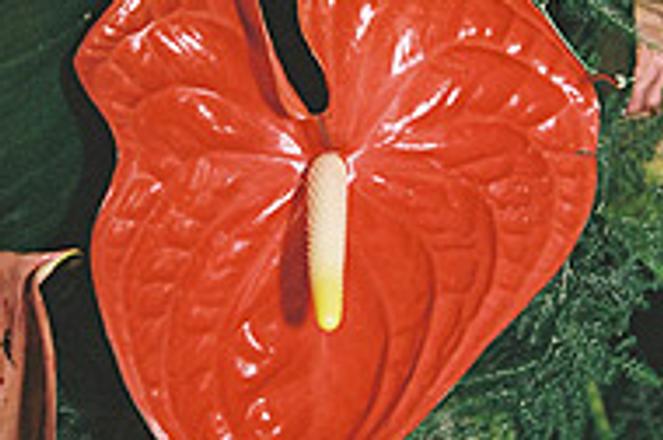photo: Jana Liptáková
AT ONE time you would not have expected to find rainforest plants in a Slovak garden. But not any more. An example is the anthurium from South America that today can be found in many Slovak houses and greenhouses.
The rainforest was the largest attraction at this year's Flóra flower show in Bratislava, complete with fresh orchids, raindrops and sounds of the jungle. The international show is in its 26th year, though it has had a few breaks along the way.
Around 50,000 people annually come to see Slovakia's largest flower show. They arrive from around the country and gain inspiration and ideas for their own gardens before they fully blossom.
"More and more people are turning to gardening," said Katarína Kullová from the Kulla gardening family, which
photo: Jana Liptáková
runs the show. "They need to relax, and in a pleasant environment. For that they begin to pay more attention to what kind of grass, trees, and plants they want in their garden."
This year, over 160 exhibitors and dealers from Slovakia, The Netherlands, Germany, Hungary, Italy, Poland and the Czech Republic tempted the senses of Flóra's visitors, who could admire tens of thousands of exhibits displayed in Incheba's halls or buy seedlings outside.
With new kinds of plants, people also take an interest in specialized gardening techniques. They build a garden complete with little lakes, lighting and other gardening accessories, such as statues. According to Kullová, garden gnomes, once so criticized as kitsch, are enjoying a popular return.
photo: Jana Liptáková
Controversial gnomes apart, Kullová thinks that the quality and appearance of Slovak gardens is changing for the better. The interest in planting goes hand-in-hand with Slovak gardeners increasing their knowledge and gaining a broader outlook on gardening from open borders and international exchange.
Slovaks are starting to distinguish between different plant species and to learn the difficult names of exotic imports.
During the show's first years, the organizers regularly introduced flowers that were unknown to most Slovaks. Showing something new was easy, because during Communism there was limited access to the international market. But finding the unknown plant has become more difficult.
photo: Jana Liptáková
Nowadays, the organizers try to highlight plants that are undervalued and deserve more attention, and so appeal to experts and hobby gardeners alike.
The anthurium, a plant with distinctive waxy flowers and leathery leaves, was selected the Flower of Flóra 2005.
"Everybody knows the anthurium to be a red, waxy flower with a distinct pistil," said Kullová. "Many people don't like it and think it's boring. But few know that there are over 500 species of anthurium in the world."
At the Flóra show 17 premium representatives of the anthurium species were arranged into a giant bouquet. All
photo: Jana Liptáková
17 types are being imported and are available to Slovak gardeners. It was a great opportunity for visitors to examine and compare the flowers' individual differences and qualities.
With a growing choice of plants and flowers on the market, the situation is also affecting suppliers. Until now imports have heavily prevailed, but that is slowly giving way to supplies from local contractors.
Entry into the European Union last year lifted business barriers and the Flóra organizers have recorded higher numbers of foreign exhibitors searching for potential local partners at the show. They say that the presence of Dutch and Italian businesspeople - known for their pro-active approach - is a signal that the local market is
photo: Jana Liptáková
becoming attractive internationally.
The international businesspeople first try to generate interest from the local public generally in their products. That creates a demand for particular plants, which local suppliers have to meet.
Planting and supplying locally has at least two obvious advantages - lower transportation costs and developing resistance to the local climate.
Slovakia has the conditions for planting more exotic types of flowers. We have many thermal springs and in the southern part of the country the climate is quite suitable," said Kullová, who would welcome more cut flowers to "be planted here and thus be better ready for the local market.
 
photo: Jana Liptáková
photo: Jana Liptáková
photo: Jana Liptáková
photo: Jana Liptáková


